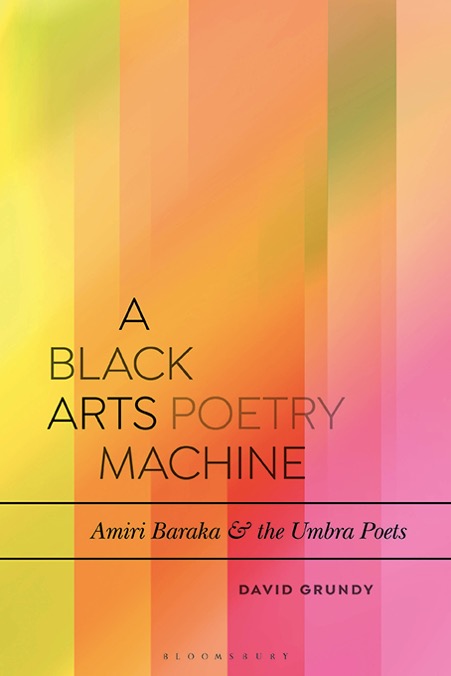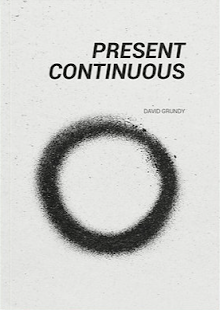
Label: Another Timbre
Release Date: July 2010
Tracklist: stück un; stück dau; stück tri
Personnel: Angharad Davies: violin; Axel Dörner: trumpet
Simon Reynell’s practice with Another Timbre seems to be to produce, if not ‘art objects’ (a term which, for me, mitigates against the essential fluidity which creative improvisation, as a practice, cannot but be intimately associated with), nonetheless carefully-prepared albums, more often than not with fairly short running times (A.D. is ‘only’ forty minutes long), that encourage one to take a measured approach: to savour them, digest them, play them through several times over, think about them, mull over them, consider them in-depth. I personally do find laudable the desire to ‘get stuff out there’, the ubiquity of new releases; the use of the technology of the Information Age to push the underground from out of its ‘underground’ cliques into the bright lights of the World Wide Web. Nonetheless, I acknowledge that there are dangers here – particularly the subsumption of easily-available and constantly-multiplying content into an information overload, a realm of the infinitely-exchangeable, where there is no time to pay attention to any one thing in particular (one must always be schizophrenic, listening to Iggy and The Stooges in one browser window while ‘the latest “eai” ’ drifts by in another); where being captivated by everything, trying to catch hold of the flashing lights, the neon fire-flies flicking past, means that one ends up being truly truly captivated by nothing, burning-out, going blind through over-exposure, going deaf through the endless babble of talk and music, the air-waves and wires and wireless streams of sound all round us. Thus, Reynell’s new releases offer a kind of welcome permanence, or semi-(permeable?) permanence; though improvisation is all about transience, what we have here are recordings – arguably, different beasts to being in the presence of (the same room as) a live, actual, in-the-moment improvisation. This is not something to deplore, though perhaps Derek Bailey might have it otherwise “so you don’t have to give it your complete, full, unadulterated attention? […] That’s one of the things that’s wrong. […] If you could only play a record once, imagine the intensity you’d have to bring into the listening.” (From an interview with Ben Watson, reproduced as ‘Appendix 3’ in Watson’s ‘Derek Bailey and the Story of Free Improvisation’ (Verso, 2004)). On the other hand, Bailey himself devoted much energy to running Incus records, so the notion of recording as death (or, perhaps, cryogenic freezing) does have to be taken with a pinch of salt. Indeed, to wish recording done away with is not only un-realistic, but, perhaps, actively harmful, given the role that recordings have had in shaping our musical consciousness (as educative tools, if you like, though not in a prescriptive way). Reynell is not simply presenting something ‘worthy of study’, like a painting or sculpture; A.D. contains no liner notes or information beyond the minimum track-listing, personnel and recording details, and so comes to the listener less burdened with pre-conceptions than a release already surrounded (smothered?) by textual discourse: liner essays, hagiographies, manifesti. Of course, given the means by which the free improvisation community receive and think about their music (online fora and review spaces), many listening to this record will be busy making comparisons with previous releases or evaluating reviews that they’ve already read.
That baggage will not go away – why should it? – and Reynell is obviously keen for the music to appear in some sort of contextual area. The last few releases on another timbre have come under ‘headings’ – ‘The Guitar Series’, ‘The Piano Series’ – and A.D. is part of a four-part selection entitled ‘Duos with Brass’. We are being specifically asked, then, to think about this music as part of the history of instrumental practice, rather than as something which is ‘just there’; one is reminded of the short (one sentence!) statement that accompanied Seymour Wright’s self-released ‘Seymour Wright of Derby’: “The music is improvised and about the saxophone - music, history and technique – actual and potential.” In the case of the ‘Duos with Brass’, the most pertinent lines of enquiry seem to concern the associations we make with regards to brass instruments (which have become very different listening propositions given the innovations of Dörner and the like), and the assumptions we make about how ‘duos’ operate.
As one might expect, on A.D., ‘duo’ doesn’t mean the obvious question-and-answer, statement-and-response, proposition and counter-proposition model. Rather, Davies and Dörner play together in a variety of different ways; always together because always in the same place (space), but patient enough to let one person say something ‘on their own’ before the other joins in, or before the other takes their own ‘solo’ (which is not really a solo as such, because it is unavoidably inscribed by what has gone before it –it is more like a palimpsest than a new line of writing). Dörner is not a ‘brass’ player as such here, though he makes much of breath, blowing burbling, subdued gusts of air; he’s as likely to let a sudden rasp of sound convince one, for a split second, that there is a percussionist in the room, or to make circular rubbing motions against the metal surface of his trumpet (as at the start of ‘stück dau’). When he plays a repeated note ‘straight’ (in response to Davies’ own deployment of that note immediately before, rendered as a more breathy wisp of sound), the effect is as surprising as if a ‘regular’ trumpet player had suddenly employed an ‘extended technique’. And it sounds as if he realizes this – there follows a silence (a moment of contemplation, of stepping back?) – before the return of the extended techniques. That doesn’t necessarily means he wants to reject what he’s just done: after all, such thoughtful players do not play something frivolously, do not ‘toss something off’. One might even construe it – that repeated conventional note – as particularly beautiful, though it might be a mistake to single out particular moments as idealised, sentimentalised ‘oases’. What is certain is that, in such an environment, the simplest of gestures can take on enormous historical weight: ten minutes into ‘stück tri’, two violin notes become a melody, against which Dorner’s blastings, growlings, mumblings, quiet roarings, become ‘counterpoint’.
I realize that some qualification may be in order regarding wording: I’ve written ‘Dörner is not a ‘brass’ player as such’, when perhaps what I meant was , ‘a conventional brass player’; for, as these new releases want us to realize, the term ‘brass’ in contemporary free improvisation can mean something quite different than it did in the past. Of course, Dörner is perfectly capable of playing ‘normal’ jazz trumpet – and does it very well – but he understands (and wants us to understand) the instrument as more than just that – as containing possibilities which are as much ‘brass’, because they are integral to the physical make-up of the instrument, as more conventionally ‘brassy’ sounds. So too Davies, in relation to the violin, deploying various objects in the strings and playing all parts of the instrument, in what might be called a state of permanent questioning (though it does, obviously, establish its own vocabulary). ‘What do I think of this object as? What is this thing I have been taught how to play? What more can I do with it than I have been taught? What are the implications of my making ‘unusual’ sounds with it? What does it mean for a technique to be 'extended'?’
Such thinking makes the instrument seem at once more natural and more alien than if it were treated conventionally: more natural because every aspect of its body, of its sound-making capacity, can be explored; more alien because it is suddenly full of new, previously unknown possibilities. In a slightly different way, the sounds produced on this record are as much ‘natural’ as they are ‘alien’: towards the end of ‘stück dau’, the two musicians create what sounds like a simultaneous impersonation of a gurgling baby and a particularly high-pitched, fluttery bird-song. And this means, despite the ‘limitation’ and ‘restraint’ which seem apparent throughout (the unspoken dictum against ‘emotive’ display, or the peacock-strut of conventional virtuosity), that there is an immense sense of possibility here: the creation of a sound-world which does not merely ‘reflect’ the non-human sounds already in existence in our environment (wind, trees, birds, animals), but which suggests them, alludes to them (whether as unconscious by-product or through deliberate intent); adds to them, expands on them, merges them with the mediations of wood and metal through the bodies of violin and trumpet, and the further mediations of these instruments through the body and breath, fingers and hands of the musicians playing them. One might reflect that it’s pretty hard to obtain entirely un-mediated access to ‘natural’ sounds, particularly if one lives in an urban environment; and one might even reflect that, given the necessary presence of a human ear to make those sounds exists within the spectrum of human thought and understanding, the concept of an entirely ‘natural’ sound (if ‘natural’ is understood as ‘non-human’) is a rather tricky one in the first place. So what the musicians are doing is akin to the way that we filter ‘natural’ sounds anyway; they are creating something which is at once ‘futuristic’ (‘far out,’ out-of-the-ordinary) and essential, even ‘primal’.
All that said, to construct a theoretical edifice about nature/culture (perhaps with reference to the increased use of field recordings within this kind of quiet, less obviously ‘interactive’ kind of free improvisation) might be possible, but is probably not desirable: Davies’ and Dörner’s meeting here doesn’t ‘pretend’ to anything (in a ‘pretentious’ sense), and might perhaps, be construed as particularly ‘un-fussy’, even as it is part of a (permanent) revolution in improvised music (whatever David Keenan might think about it). On A.D., the sounding (out) of the extra-ordinary is not ‘trumpeted’, blared-out with brassy abandon, but unfolded with quiet and focussed intensity. A neat parallel is provided by the track titles, which mix the German ‘stück’ with the Welsh ‘un, dau, tri’, in an acknowledgment of the musicians’ respective nationalities; in itself quite an audacious linguistic mash-up, this phrasal quirk comes across not as clever-clever inventiveness, but as a genuine, and welcome, surprise. So with the music: not workmanlike in the slightest, it retains the atmosphere of surprise – of magic – that great improvisation is still so uniquely capable of providing, even within the ‘confines’ of a by-now well-established and developed vocabulary.




